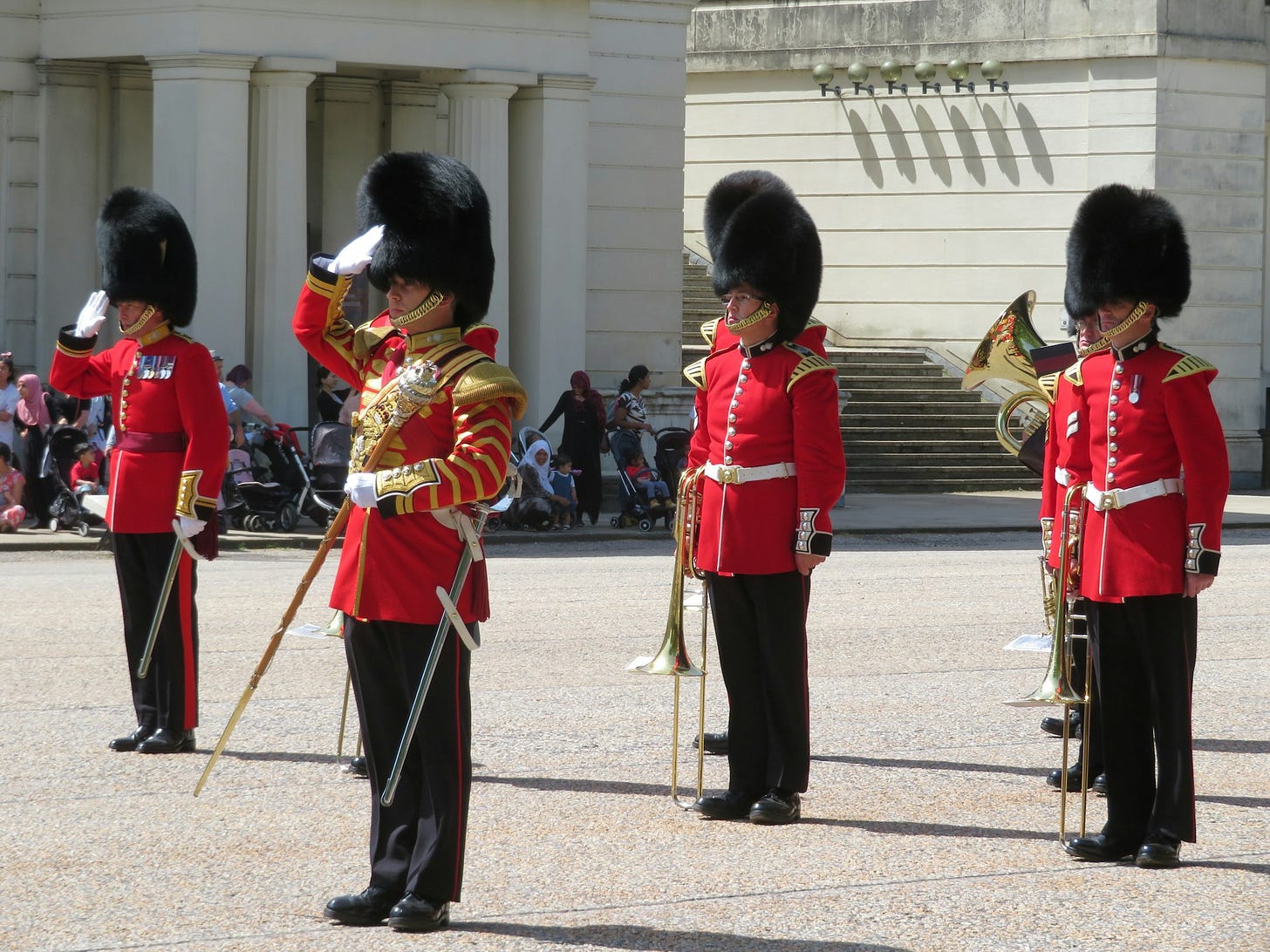Posture
Study.

How do you demonstrate discipline?
Borrow One Idea: Stand at Attention
When I was in fourth grade, I was the ring bearer at my cousin’s wedding. It was a very hot day in a church without air conditioning. I was a 10 year old in a tux. The best man kept telling me to stand up straighter. Even before the vows occurred, I needed to walk off, stage right. I was reacting to feeling woozy…at the time I did not appreciate that there was a real risk of pitching over in dangerous or comical fashion.
The key to standing at attention is to not lock the knees.
Locking your knees reduces blood flow in your lower extremities, causing pooling and reduced pressure through the rest of your vascular system, thereby decreasing the amount of oxygen to the brain.
Which can result in a face-plant.
There is a correct way to stand at attention.
4-3. Two commands can be used to put personnel at the Position of Attention:
FALL IN is used to assemble a formation or return it to its original configuration.
The two-part command for Attention is used for Soldiers at a rest position. Assume the Position of Attention on the command FALL IN or the command Squad (Platoon), ATTENTION.
4-4. To assume this position, bring the heels together sharply on line, with the toes pointing out equally, forming a 45-degree angle. Rest the weight of the body evenly on the heels and balls of both feet. Keep the legs straight without locking the knees. Hold the body erect with the hips level, chest lifted and arched, and shoulders square. Keep the head erect and face straight to the front with the chin drawn in so alignment of the head and neck is vertical.
4-5. Let the arms hang straight without stiffness. Curl the fingers so that the tips of the thumbs are alongside and touching the first joint of the forefingers. Keep the thumbs straight along the seams of the trouser leg with the first joint of the fingers touching the trousers (see figure 4-1 on page 4-2). Remain silent and do not move unless otherwise directed.
Note. This position is assumed by enlisted Soldiers when addressing officers, or when officers are addressing officers of superior rank.
TC 3-21.5, Chapter 4, PDF page 31
Even if you do not need to stand ramrod straight in a formation, how you stand and carry yourself matters.
Posture matters.
Standing at attention, with your eyes to the horizon, demonstrates confidence. It allows individuals to interact while conveying hierarchical and interpersonal respect. It establishes presence.
The ability to stand at attention, however we modify it for professional settings, is the result of discipline. It takes actual practice. The tendency is to relax or slouch.
Slouching, to be clear, is not a result of a lack of discipline. Slouchers might be highly disciplined. But they do not look like it.
The person standing up straight, with good posture, is understood to be disciplined. Engaged. Attentive. Ready.
When demonstrated, this discipline inspires emulation from those around you.
This week, borrow with pride and write and focus on your posture. Which of your behaviors and actions are emulatable? How do you carry yourself throughout the day?How do you demonstrate discipline?
Get Familiar With: Drill & Ceremonies
The purpose of drill is to enable commanders or noncommissioned officers (NCOs) to move their unit from one place to another in an orderly manner, to aid in disciplinary training by instilling habits of precision and response to the leader’s orders, and to provide for the development of all Soldiers in the practice of commanding troops.
…In 1775, when this country was striving for independence and existence, the Nation’s leaders were confronted with the problem of not only establishing a government but also of organizing an Army that was already engaged in war. From the “shot heard around the world,” on 19 April 1775, until Valley Forge in 1778, Revolutionary forces were little more than a group of civilians fighting Indian-style against well-trained, highly disciplined British Redcoats. For three years, General George Washington’s troops had endured many hardships—lack of funds, rations, clothing, and equipment. They had also suffered numerous losses to the superior British forces. These hardships and losses mostly stemmed from the lack of a military atmosphere in the country, resulting in the creation of an Army with little or no organization, control, discipline, or teamwork.
TC 3-21.5, 1-1 and 1-2, PDF page 13
How do you demonstrate discipline? What training or practice in your organization seems minor but has major impact? When does an organization (or you) need to add more control and discipline? When does discipline become rigidity? What drills and ceremonies add to a professional atmosphere of excellence?
The Guided Discovery for this week will consider the US Army’s instructions on drill and ceremony and how they might mirror the precision and discipline required in our professional and personal life.
Learn More: Suggested Reading
TC 3-21.5, Drill and Ceremonies
Pages 1-1 through 3-5 based on printed document (PDF pages 13-29)
An introduction to drill and ceremony, focused on instructions and commands
These materials will be the focus of Thursday’s Guided Discovery
Catch Up: Last Week’s Content
Study: Organizational & Strategic Leadership
Guided Discovery: Write
Always be asking:
1. What is the connection with my leadership development?
2. How does this change my thinking on management?
3. How does this influence planning for life?
4. What can I borrow with pride to use this week?
